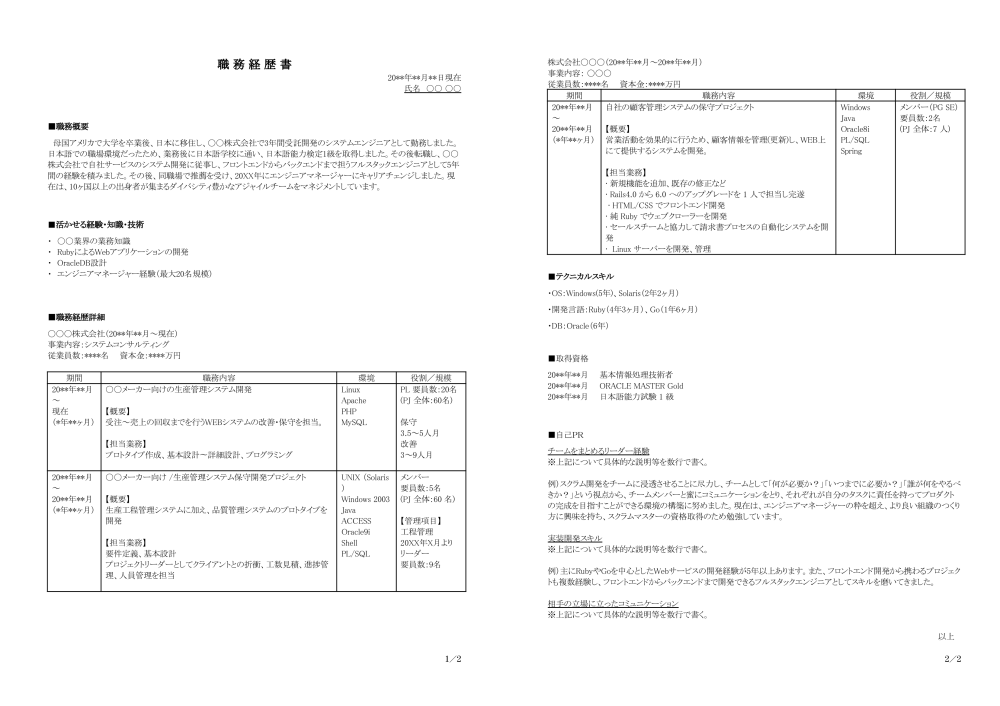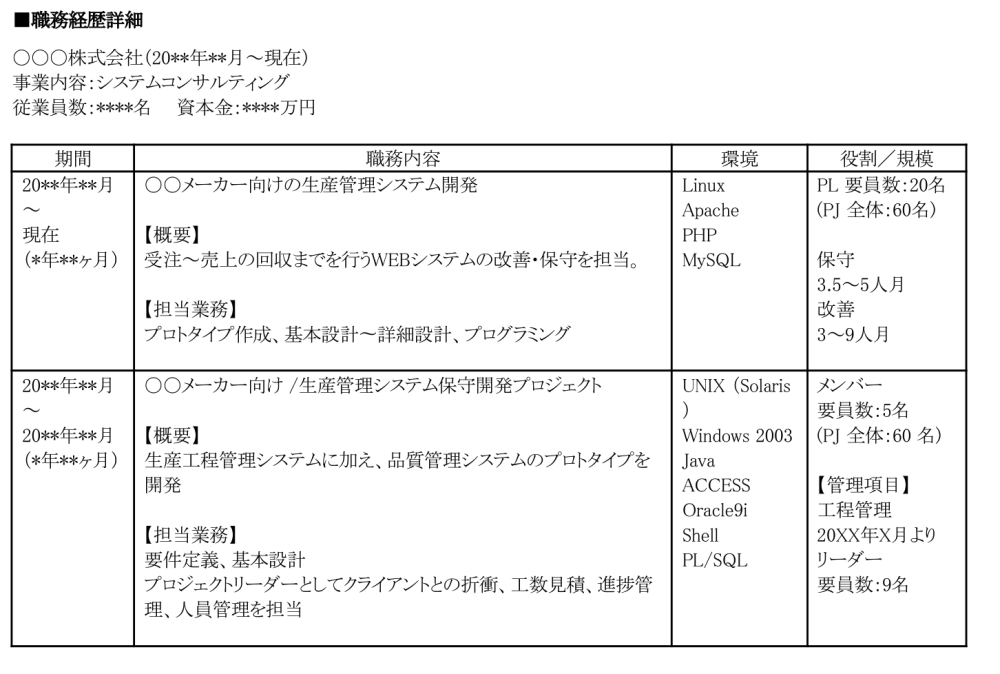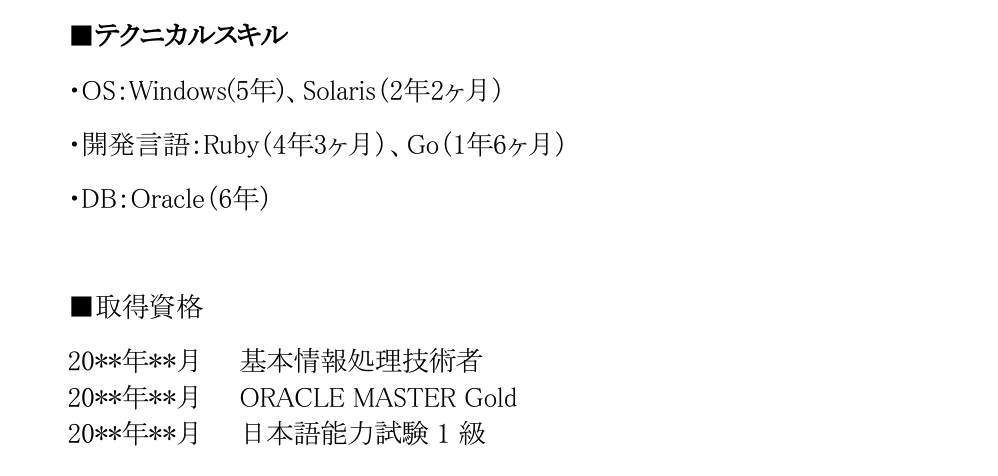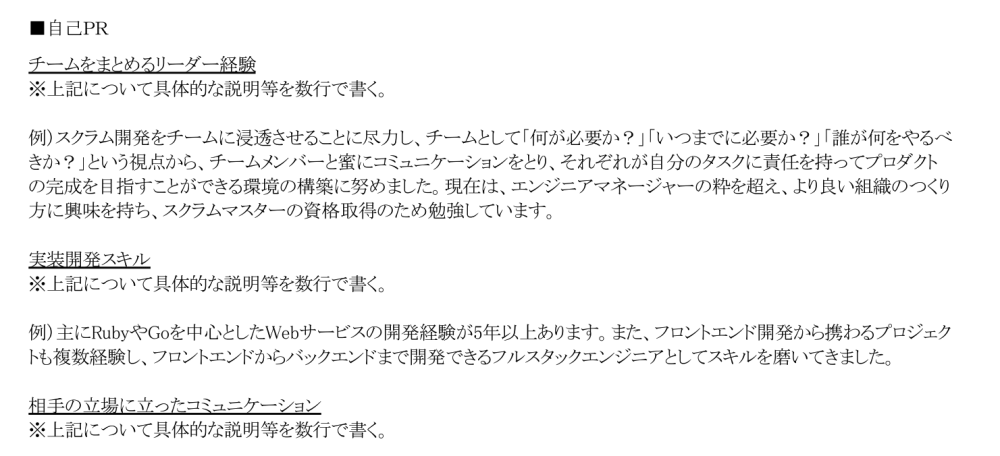Updated September 5, 2023
What's a Shokumu-keirekisho? How to write a Japanese CV [with template]
Leaving a good first impression is always important, especially in a business context, and that’s exactly what your CV is for.
If you want to maximize your chances of getting the job, you need a CV that’s well-prepared. However, there’s no “one-size-fits-all” approach when it comes to preparing a good CV.
Not only do you need to be mindful of the industry you’re in, but if you’re applying for jobs in Japan as a foreigner, you also need to be mindful of the commonly used formats. But you also need to think about the company you’re applying to. For larger and more traditional Japanese companies, you may want to be conservative, but this is less important for more international companies.
Essentially, you want to send the right type of CV for the job you want. That is, of course, if you don’t want your CV to be thrown into the “rejected” pile.
This is why today, I’d like to talk about one of the two specific CV formats that exist in Japan, which is “shokumu-keirekisho.” I’ll tell you how it differs from the other CV format, “rirekisho,” when you should prepare one, as well as how you can prepare one in detail.
I also built my very own template for the Japanese CV shokumu-keirekisho, which you can simply download and fill out.
Download my Japanese CV template here and follow along.
Let’s start with the differences between rirekisho and shokumu-keirekisho, and whether you need one in the first place.
In this article: 📝
The Accepted CV Formats in Japan For Software Engineers
As I mentioned, there are two specific CV formats that are commonly used in Japan, namely “rirekisho” and “shokumu-keirekisho.”
If you’re not familiar with either, you might be confused as to which one you should use or if you should use one at all, which is also a possibility if you’re a software engineer, and I’ll get to this in a bit.
Additionally, there are also instances where you might need an English resume. I also talked about this in detail in another article for drafting a resume in English as a developer in Japan.
Now, let’s get on with the two specific Japanese resume formats and how they differ from one another.
The Main Difference Between Shokumu-keirekisho and Rirekisho
In the simplest terms, the main difference between a rirekisho and a shokumu-keirekisho is the level of detail the two documents include.
A rirekisho has all the basic information a company will need to know about you at first glance, which includes your contact information, education, work background, and relevant qualifications.
However, a rirekisho doesn’t include details such as how your job experiences relate to the position you’re applying for or what your duties were at a past company. These details are usually saved for the second, more detailed type of resume we’re focusing on today, shokumu-keirekisho.
Usually, you need both of these documents if you’re job hunting in Japan, and the process is primarily in Japanese. Usually you will submit both documents at the same time when you apply, and it can be helpful to bring a copy of both to your first interview just in case.
Sometimes, companies will state that you don’t need a shokumu-keirekisho and only require a rirekisho. In this case, it’s fine to skip sending this document — you shouldn’t include it if the company specifically asks you not to. But if it’s not stated that you don’t need one, it can’t hurt to include it.
If you’re curious about what you’ll be asked in a job interview, you can check out our post on the top interview questions in Japan.
Even though these resume formats are widely popular in Japan, they’re usually only required when you’re applying to a traditional Japanese IT company (particularly a “system integration” company).
If you’re applying to IT startups and companies that are more on the “modern” side, like the ones on the Japan Dev company list, you don’t have to go through the trouble of following a specific format.
If you’re applying to a more modern Silicon Valley-style tech company in Japan, please skip to the “How to Write a Japanese CV for Software Engineers: Tech Startups and Modern IT Companies” section.
Either way, I’ll also explain how you can prepare an impactful CV for these companies below, but first, let’s take a look at what goes into preparing a good shokumu-keirekisho.
Before I go into the specifics, I’d like to remind you that I also have a separate post detailing how you can prepare a good rirekisho, which also includes a downloadable template.
How to Write a Japanese CV Shokumu-keirekisho for Software Engineers

Unlike rirekisho, which mostly has a specific format due to the form-like nature of the document, there actually isn’t a specific shokumu-keirekisho format that’s “correct.”
However, there are definitely some things that you must include. These are
Your title and personal information,
A detailed summary of your career,
A detailed summary of your relevant skills and knowledge in the field,
Your work history (specific companies and roles)
Your technical skills that are relevant to the job you’re applying for, and
Self-Appeal (Self-PR).
Now, let’s get into the specifics of how you should write these sections in your shokumu-keirekisho.
Title and Personal Information

A good shokumu-keirekisho starts with a proper title. Write “職務経歴書” at the top of the page, and start with your personal information and the date of creation and/or submission right below that.
You can include everything from your full name and address to your contact information like phone number and email address here just to be thorough, but usually, just your name and the document submission date should suffice.
As for the date, make sure you update the date of submission every time you send your CV to a new company.
If you include the creation date, be sure that the date isn’t older than a few months. Japanese companies pay extra attention to this, and they might ignore your resume if they assume that the information on your CV isn’t up-to-date.
Lastly, remember to write the date in the Japanese date format, which goes like “year/month/day (day of the week).” You can skip the day of the week, of course, but the date itself should be written in Japanese format.
Career Summary

This is the part that recruiters like to look at first when they review a CV, and therefore, it’s arguably the most important part of your resume.
You might be confused as to why there are separate “career summary” and “work history” sections, as it may look like they both refer to the same thing, but there’s a difference.
Your career summary is where you give a general overview of your work history before you go into the line-by-line specifics of each company you worked for. You can use simple sentences here to describe your career so far in a brief paragraph.
You can consider this as the abstract to your CV, as it’ll serve as an introduction to what you’ve done until now. Therefore, not going into too much detail and keeping it between 200 and 300 words is a good idea.
Summary of Relevant Skills

In this section, before you get into the specifics, you’ll give a brief introduction to your most relevant technical skills for the job. A few short lines should be enough here, as you can see in the example.
Basically, you want to present the information you want the recruiter to see first here. Don’t try to add everything in this section — there’s a separate section below where you can talk about all of your skills in more detail.
Work History

Finally, this is the part where you get to go into detail about each one of your past experiences, as it serves as “the meat and the bones” of your CV.
In this section, you can list each job experience as a bullet point. Under each one, you can include various information, such as the skills you’ve used/developed, as well as your duties in each position.
There’s no right or wrong here. You can include any relevant information under each experience that you think will help you get the job. Be sure to also include the relevant information for the companies you worked for.
This can include but is not limited to when the company you worked for was founded, the industry the company is in, the number of employees, and the company’s yearly profit. You should also include information regarding your position. Here are a few specific topics you can mention:
The duration of your employment,
The projects you’ve participated in,
Your department and title at the company
The projects where you were a part of the development cycle, and
The programming languages, frameworks, and programs you used.
It’s important to include relevant information here, of course. However, you should avoid including unnecessary details and only include the information that you think will be helpful. There’s no hard limit on number of pages, but it’s good to keep it concise where possible.
Following a Reverse Chronological Order
Another important point in this section is to list your past jobs in reverse chronological order. You want to start with the most recent job at the top and work your way down to the first job you had.
You might get confused here because, in a rirekisho, you’re expected to do the exact opposite and list your experiences chronologically.
The reason you’re following a reverse chronological order this time is that, in theory, a rirekisho is considered a more “generalized” document. In contrast, a shokumu-keirekisho is a specific document that you’re supposed to prepare for each application.
Therefore, recruiters will prefer to check your shokumu-keirekisho when they’re screening your application, and they want to see your most recent job experience right at the top.
Detailing and Categorizing
Since there’s no set format you need to follow with a shokumu-keirekisho, you can get as specific as you want. I recommend mentioning not only the projects you worked on but how these projects were completed and what the results were as well.
For instance, you can include information on whether the project was completed earlier than planned without any hiccups. You can mention things like how the project helped improve the system performance or the efficiency of your team.
Additionally, you can treat your shokumu-keirekisho as your portfolio and include links to the finished projects, like an app you helped build or a website you created. You can also mention what you’ve learned while working on these specific projects, which will be even more impactful.
Lastly, as opposed to grouping the projects, skills, and languages in the same section, I recommend leaving a separate column for the programming languages and the projects, as we did in the sample above. This will help the recruiters find the information they need the most easily.
Relevant Technical/General Skills and Certificates

In this section, you’re expected to talk about your relevant technical skills and qualifications.
As the shokumu-keirekisho is supposed to be tailored for the specific position you’re applying to, it’s best to start with the most relevant skills first. Again, you can get creative here and group things so that they’re easier to go through.
I recommend starting with your technical skills first. Don’t forget to mention how long you’ve had the said skill next to each item on your list.
You can also create a sub-group for your relevant education in the field and list any diplomas and certifications you collected. If you’ve had any internship programs that you couldn’t include in the career history section, you can list those here as well.
What’s more, as a foreigner, you’ll need to specify whether you speak Japanese or not and what your JLTP level is in your CV. You can mention this along with the other languages you speak in this section. If you have multiple qualifications for this section, you can again create a separate section in your CV just for languages.
If you don’t speak Japanese or don’t have a JLTP score yet, you can benefit from my other post, where I talk about the best Japanese language schools in Japan.
Self-Appeal

Last but not least, the self-appeal section, also known as the “self-PR” section, is the part of your CV that is essentially for bragging — but with style.
Before you write this section, don’t forget that there’s also a self-PR section in your rirekisho.
If you’re sending both for an application, remember to switch things up between the two documents. Alternatively, you can give general information in your rirekisho and be more specific in your shokumu-keirekisho.
You can freely express what you can bring to the table in this section. You can talk about how your skills and qualifications can contribute to the company you’re applying to. You can describe how you’re the perfect fit for the job. It’s all fair game.
You can also mention why you’re applying for this specific job and talk about your reasons. I recommend saving at least half of this section to talk about your motivations specifically, which will grab the attention of the recruiter.
Generally speaking, it’s best to keep this section to around 300 words. Try to have a clear focus and avoid using pretty but meaningless words to avoid giving the impression that your motivation lacks substance.
Japanese CV Template: Shokumu-keirekisho Template for Engineers
As there isn’t a specific format that exists for the shokumu-keirekisho, you can download the sample I created — the included screenshots are from the sample — and fill it out to use in your applications.
This sample was created specifically with engineers in mind (with a focus on more traditional companies like “SI” companies), but it can also be modified to fit other industries as well.
Here’s a downloadable link to my very own Japanese CV template:
Japanese CV template - download.
How to Write a Japanese CV for Software Engineers: Tech Startups and Modern IT Companies
As I mentioned, while a shokumu-keirekisho is a popular CV format that’s widely used in Japan, if you’re applying to tech startups, modern IT companies, or companies that develop B2C (business-to-consumer) web services, you don’t need any of these.
Actually, you don’t need to follow any specific format. You can just create a modern CV that you’d prepare for a job in the United States or Europe. However, there are definitely some tips you can follow to make your CV as striking and impactful as possible, and that’s what I’m here to talk about as well.
As there isn’t a specific format to follow or a form to fill out, feel free to prepare your CV using Google Docs, Github, or Notion. You can also use Markdown if that’s what you feel more comfortable with.
While writing your CV, even if you don’t follow this particular order, you should include the following sections:
Profile,
Career Introduction,
Work History,
Skills,
Languages,
Personal projects and miscellaneous activities,
Social/Online presence,
Self-Summary (Self-PR), and
Career plans.
Now, let’s take a look at each section and how you can write them.
Profile
There isn’t much to explain here, as this section is where your personal information goes.
Your full name, age, birthdate, as well as contact information, like your email address and phone number, all go under this section.
You can also include a link to your LinkedIn profile here, but you can also choose to do this in a separate section where you’ll mention your online presence anyway.
Just don’t go overboard and share all your socials. Your LinkedIn should be enough to identify you. Instagram links can look unprofessional so we don’t recommend including them, but a Twitter link can be helpful if you have a lot of followers or are putting a lot of effort into tweeting (professionally).
Career Introduction

Before you get into the specifics, it’s a good idea to start your CV off with a brief summary that doesn’t go over a few sentences. Think of this as an elevator pitch. You want to be as concise as possible while giving out the most crucial information about yourself.
Here, you’ll talk about the most important aspects of your career. Think about what sets you apart in terms of your professional experience in the field, and center this part around that.
Remember that the recruiters will most likely look at this section of your resume first. Even if you don’t prepare a separate CV for each job you apply for, I at least recommend tailoring this part specifically for every application.
For the same reason, I also recommend mentioning your visa situation in this section as well if you think it will help your case. For example if you have permanent residence, it can be helpful to include that here.
Therefore, if you already have a visa that allows you to work in Japan, stating this in the summary section will definitely work in your favor.
Lastly, try to keep this section concise. I recommend not going over 300 words. A small paragraph should do, and I think that a word count between 250–300 words is the sweet spot here.
Work History
Similar to your work history section in the shokumu-keirekisho I explained above, you’re expected to list all of your professional experiences in this section.
Writing in chronological order should be fine here, so you can start from the very first job you had at the top and work your way down to your most recent work experience.
For clarity purposes, you should write the projects you were involved in as bullet points. Depending on the formatting of your choice, under or next to each project, you need to provide the most important details. Here are some of the things you should definitely mention:
The name of the project
The period — the amount of time you’ve worked on the project.
Job title and description — your position in the project and briefly describe your duties.
Scale — the scale of the project in terms of size and the number of people involved if you’re at liberty to share such information.
Languages and Operating Systems used — everything from programming languages to databases used in the process.
Target — the target user of the project.
If your work is largely project-based and you have more than a few projects under each job, you can also create a separate section under this one for projects. If you do separate the projects section, you can just state your title and duties next to each work experience, along with your accomplishments in the role.
Skills
In the skills section of your CV, you’re expected to list your technical and soft skills.
For the technical skills part, I recommend listing a balanced set of skills. In general, I’d say that technical skills can be categorized under two groups: skills that are current and trendy, and basic skills that are evergreen.
What I mean here is that you should list enough of both skills that are basic and will show the depth of your technical understanding and skills that are currently trendy to have in your field.
Most young engineers make the mistake of mostly listing skills that are trendy, and they forget to list the most obvious and basic stuff. However, these skills can become obsolete in the near future at any moment when the tide turns, and this is why it’s important to have a good balance.
As for your soft skills, since it’s very easy to be cliche and list generic things like “good communication skills” or “time management skills”, I recommend a more specific approach here.
Think about the projects you’ve worked on, and try to focus on your strengths. Try to remember what challenges you actually faced and how you handled them. This can help you come up with more specific skills that actually look convincing.
For instance, instead of just stating that you have good leadership skills, you can come up with a solid example from your own past experiences and state how you rose to the occasion during a specific time when your leadership skills were needed.
Languages
This part doesn’t need much introduction. Essentially, you need to list the languages you speak in this section.
If you know Japanese and have a JLPT certificate, you should definitely mention it here. Don’t forget to mention your first language too, and if English is one of your second languages, you can also include any TOEFL or IELTS score you may have.
If you don’t speak Japanese but want to learn, you can check out my post on the best tools to learn Japanese. If you’re already learning Japanese and want to take the JLPT test, I also have a separate post where I explain how to prepare for the JLPT specifically.
Personal Projects and Miscellaneous Activities

You might have tons of work experience, but work is work at the end of the day. It’s something you do to earn a living, and thus, it’s considered the bare minimum in terms of actual experience.
If you have the work experience needed, what you do outside of work can be really effective in setting you apart from the rest of the applicants. This is why I recommend listing all of your personal projects in this section, as well as any other activities you think are relevant to the job you apply for.
Any open source or collective projects you’ve contributed to go under this section as well.
Social/Online Presence
Your online presence is important for your CV as well. Your Twitter can be helpful for tech companies so feel free to include it if you think the company you’re applying to would appreciate it.
Adding links for your GitHub, Stack Overflow, HackerRank, or any other relevant profiles you may have with quality content is a good idea here. These will serve as living proof of your coding abilities.
Also, if you have a personal website or a blog, I recommend listing that as well. If you don’t have one yet, I recommend taking the time to create one, as it’s an investment that will definitely be rewarding down the line.
If you haven’t done so already in your summary section, you can also add your LinkedIn profile here as well.
Self-PR
As you already covered plenty in the sections that came before this, I recommend going easy on the self-PR section and going for a more focused approach.
A good approach to preparing to write this section is researching the company you’re applying to. Try to find out the technology used or what kind of culture the company has. This can help you create a targeted self-PR section where you can talk about how you can contribute to the company.
As for the length, I recommend writing a concise and focused paragraph of about 300 characters that delivers the most crucial information about you.
Career Plans
Lastly, you may want to discuss your future career plans before you finish your resume. This section isn’t strictly necessary, so I’d only recommend including it if you think it will make you look more impressive.
This section is for describing what your career goals are and how this specific job fits into your career plans. Basically, you want to look like you know what you’re doing and not just applying to jobs for the sake of getting a job.
If a recruiter isn’t convinced that the job you’re applying for is the one you planned for yourself all along, they may set your resume aside in favor of someone who is more convincing. This is because, essentially, recruiters don’t want to risk hiring someone who took the job on a whim and may quit at any moment.
Writing a few sentences that’ll make you look like you know what you’re doing with your career should be enough here. After explaining your goal, you can tie it all together by explaining how this job brings you one step closer to where you want to be in life, and you should be good to go!
Extra info
Why do I want to work in Japan?
If you’re applying from overseas, it might be helpful to state why you want to work in Japan. If there are any concrete reasons you can provide, that’s especially good.
For example, if you belong to Japanese communities, have friends or family in Japan, or if there are specific goals you want to accomplish here. A lot of companies will be apprehensive about hiring someone from overseas due to the extra costs involved and your lack of experience here, so I recommend trying to assuage their fears if possible.
However this section is optional.
Japan Visa Status
This is another optional section, but again it can be helpful in certain circumstances.
Do you have permanent residency, or are you married to a Japanese national? If so it can help your chances of getting an interview to state that here.
Otherwise, you can be honest and say that you’ll need visa sponsorship, or you can just skip this section.
A Few Final Words of Advice
Before I conclude this guide, I’d like to share some notes and tips that you might want to watch out for when preparing your CV.
You generally shouldn’t include a photo in your shokumu-keirekisho. This can help take bias out of the equation and give you a more fair chance. Some more traditional companies might require one on your rirekisho however.
I also recommend leaving out information such as your gender and marital status for the same reason, which is also becoming a thing of the past.
Lastly, you might also want to leave out the references section that you commonly see on western-stye resumes. The recruiter will ask for your references if needed, and therefore, it’s not necessary.
Basically, this is all the information you need to prepare a good Japanese resume in both traditional and modern ways. However, before you get on with your job-hunting journey in Japan, you might also want to check out my guide on how to find a job as a software engineer in Japan.
Get Job Alerts
Sign up for our newsletter to get hand-picked tech jobs in Japan – straight to your inbox.


